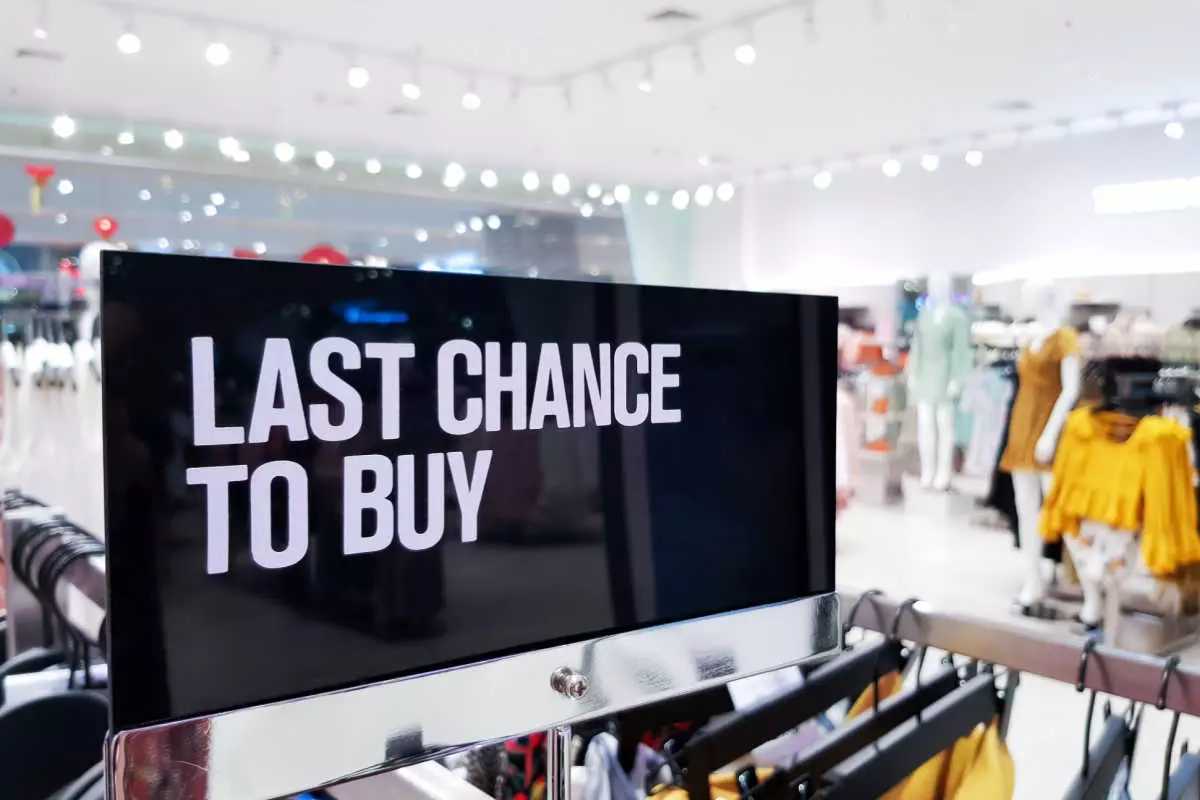Have you ever wondered how some marketing campaigns successfully lead people to respond? Businesses pour so much time and money into their marketing, but there is no guarantee that consumers will react accordingly.
Foremost, a firm must understand its target audience and build marketing campaigns that appeal to these consumers. As it would be ineffective to give a college-level lecture to kindergarteners, creating marketing content that is irrelevant to your consumers is a waste of resources. Especially in digital marketing and paid search advertising, having the wrong audience engage with your content can quickly deplete your budget before you can generate any profitable leads or prospects.
Psychology can help you understand how people think and react to different stimuli, events, and designs. When you combine marketing and psychology to create relevant content, you are more likely to guide consumers to respond as you desire. Relevancy can boost overall engagement and conversions while saving you time and money.
Let’s explore different marketing psychology principles you can apply to future marketing campaigns.
Priming in Marketing Psychology
Priming is like the first layer of paint used to prepare a wall that needs painting. The priming coat is used to smooth out any rough surfaces, so the following layers can adhere better and be applied more cohesively.
In marketing, priming uses an initial stimulus to prepare consumers to respond to additional information. For example, playing an upbeat tune at the beginning of a video can help set the tone for the exciting announcement to come later on.

This example of priming shows how the initial stimulus unconsciously influences how individuals respond and engage with additional information presented. The goal of priming is to prep those engaging with your content, so they will hopefully respond to content as you desire.
How to Prime the Customer?
A practical way to prime your customers is by using color psychology marketing. Colors have the power to invoke certain emotions and influence decisions. For example, hospital bereavement rooms are often nicknamed “cool rooms” or “blue rooms” because they typically have blue color schemes, which is because blue psychologically lowers heart rate and induces calmness. The performance of different colors will vary depending on how it’s used. Conduct research and A/B testing to see what colors work best for your brand and content.
Also, try priming with relevant text and images. If you seek to target Gen Z with your marketing, consider incorporating their slang, pop-cultural references, or even viral TikTok trends in your headlines and graphics.
Reciprocity Principle in Psychology
Has a friend ever treated you to a meal or given you a gift, and now you have the desire to return the favor? The driving mechanism behind this force is the reciprocity principle. The reciprocity principle targets our innate desire to reciprocate or return a kind gesture. Consumers are more likely to give something in return when they are first offered something, usually at a low cost or for free.
How to Use the Reciprocity Principle in Marketing?
For instance, companies may offer free trials of products in exchange for people’s emails. In doing so, the company can now contact the consumer through email marketing, and the consumer can now try a product for free. It’s practically a win-win solution.
Use lead magnets to apply the reciprocity principle in your digital marketing. Examples of things you can offer include free consultations, e-books, product trials, newsletters, and resource guides. Giving something away for free does not always equate to losing money; rather, it can be seen as an investment. As such, the reciprocity principle can increase brand awareness, improve traffic, and acquire new leads.
Scarcity Principle
Scarcity marketing targets consumers who gravitate towards exclusivity and place a higher value on limited-quantity goods. Many high-end designer brands capitalize on this marketing principle by limiting the production of their items.

This scarcity tactic ultimately drives up the product’s demand, which can then be used to justify the high-priced tags. Creating a sense of scarcity in your marketing efforts can compel consumers to respond more urgently.
How to Use Scarcity Marketing?
Limiting the time for which a product is available can also be used to prompt consumers to respond quickly. Setting deadlines or promotional time frames are ways to create a time scarcity. Implementing countdown timers can also aid in scarcity marketing. Consumers are encouraged to become more proactive in their decision-making under time constraints.
For instance, a roofing company may benefit by making a busy schedule known. Not only are people more likely to book in order to reserve a spot if there is a scarcity of appointments, but a busy schedule also indicates a trusted and popular service, which can also influence a potential customer.
Information-Gap Theory
People innately have the desire to learn and acquire more knowledge. The information-gap theory is used in marketing to target people’s curiosity to seek out the information they lack. When consumers see a catchy headline, they are more likely to continue reading. It creates a figurative itch in their brain that needs to be satisfied.
However, if the information they lack can be fulfilled through an educated guess or rationalizing, they are likely not to probe further. Similarly, if the information is too difficult to understand, then individuals become uninterested.
How to Use the Information-Gap Theory in Marketing?
Produce content your demographic is interested in learning. Use catchy and attention-grabbing language to attract readers. Informative articles like “10 Things to Know Before Starting a Small Business” or tutorials like “How to Start an Online Business” are examples of practical resources your readers can benefit from. Incorporating action verbs, quantifiable values, and questions into your headlines are ways to help entice consumers to keep exploring your content. Spark your consumer’s curiosity with the headlines, but be concise so the readers know what to expect.
However, do not be deceptive or use misleading language to promote your products and services. Though you may receive more clicks on your ads, many people will leave without converting after realizing they have been misled. Therefore, deception is not only costly for your marketing budget, as it significantly diminishes earnings per click, but also can hurt your brand’s credibility. Instead, engage with your audience by posing questions your content can answer.
Social Proof Psychology
Many people turn to websites like Zocdoc to find health providers in their area. Reviews and insights are provided by patients instead of medical professionals. Yet, people generally accept the reviews and use them to influence their decisions. Why is that?

Well, this explores the idea of social proofing. When people are unsure of what to do in a given situation, they are more likely to copy the actions and behaviors of their peers. Individuals are looking for socially-verified proof to vouch for the quality of a product or service.
How to Use Social Proof Marketing?
Social proof marketing incorporates people’s feedback. It is common to see businesses incorporating TrustPilot or other consumer review platforms onto their company’s website to vouch for their brand.
If you are a new brand or do not have a significant volume of reviews, boost your social media presence. Create social media accounts, proactively engage with your followers, and consistently post relevant content. You improve your credibility when you amass a large following and establish your presence on social media.
Social media influencers have many followers, making them powerful marketing tools for today’s brands. Use these influencers to your advantage. Be strategic about who you want to represent your company and make sure the influence they have is relevant to your brand and target audience.
Loss Aversion Psychology
Many people prefer to avoid loss than to potentially gain something of equal value. Loss aversion argues that the pain of losing $50 is greater than the satisfaction of receiving $50.
Retail businesses may use this to their advantage by offering coupons. Let’s say a store rewards a customer with a $30 off coupon for their next purchase of $50 or more, but it expires in two weeks. If the customer does not want to lose out on this free $30, they will be more inclined to shop again at the store in the coming week. Loss aversion creates a sense of urgency for consumers.
How to Use Loss Aversion Marketing?
Use exclusive offers, promotional discounts, or even free shipping on purchases over a certain amount as a way to incorporate loss aversion into your business. Consumers know that if they do not respond or meet specific requirements, they can lose a perk they currently possess.
For instance, they risk losing free shipping if they do not spend enough money. Therefore, if you want consumers trying out your service or product to continue engaging with it, offer them an exclusive limited-time deal they can only take advantage of in the present. For instance, a seasonal deal on a service can create a sense of urgency. Loss aversion marketing works with scarcity marketing principles to promote consumer proactiveness.
Anchoring Effect
Anchoring creates a focal point for your consumers to focus on before being introduced to new information or products. For example, when stores mark down prices for products, they’ll often include the original price to serve as an anchor for the new price. The marked-down price is the focal point on which consumers would concentrate.
By recognizing the original price and comparing it to the reduced amount, consumers are psychologically influenced to perceive a perk. Anchoring targets individuals’ tendency to consider the first thing they are shown and use it to influence how they value future information and make decisions.
How to Use Anchoring in Marketing?
Using particular words or phrases in your marketing headlines can anchor your consumers to think a certain way about what you’re marketing. For example, if your dental practice is looking to promote teeth whitening service, you may consider anchoring by setting a regular price and then offering a discounted price. By using the higher regular price as the reference point, the discounted price appears more appealing to patients, which can encourage them to take advantage of the offer.
Decoy Effect Trick
The popcorn sizes offered at movie theaters are prime examples of the decoy effect in action. The decoy effect is an advertising psychology trick that guides people toward making certain purchases.
Suppose the prices for a small, medium, and large are $4.00, $7.50, and $8.00, respectively. Based on these prices, consumers are more inclined to purchase the largest popcorn, which can be seen as the best deal. For only 50 cents more, you can upgrade your medium popcorn to a large popcorn.
If the theater only offered small and large popcorn, then consumers only base their decision on two price points. However, when a third option is introduced, consumers’ perception of value changes. As a result, medium popcorn becomes the least attractive option and serves as a decoy for people to opt for a larger purchase.
How to Use the Decoy Effect in Marketing?
Apply the decoy effect in your marketing when you need consumers to make a choice. For example, a pool installation company can create price points for its services as follows:
- Small (12×24 ft): $25,000 – $35,000 for vinyl liner, $30,000 – $50,000 for fiberglass, and $35,000 – $60,000 for concrete (gunite)
- Medium (16×32 ft): $35,000 – $45,000 for vinyl liner, $40,000 – $60,000 for fiberglass, and $50,000 – $75,000 for concrete (gunite)
- Large (20×40 ft): $45,000 – $60,000 for vinyl liner, $50,000 – $70,000 for fiberglass, and $60,000 – $100,000+ for concrete (gunite)
The most expensive option serves as the decoy to make the other prices seem more affordable. As a result, the vinyl liner plan becomes the ideal option. The company may further distinguish the ideal package by labeling it with phrases like “Most Popular” and highlighting the option with a different color.
The Baader-Meinhof Phenomenon
Imagine your friend shows you their new car. After that interaction, you begin to notice the same brand and model of the car more often. The number of this specific car brand probably did not increase; however, you have become more aware of it.

The Baader-Meinhof Phenomenon or frequency theory explains this scenario. According to this theory, things appear more frequently once you have previously cognitively registered them.
How to Use the Baader-Meinhof Phenomenon in Marketing?
Use this principle to your advantage by keeping similar themes and ideas throughout all marketing channels and campaigns. Identify the style you want to execute in each campaign and create consistent graphics with a pre-determined color palette. Promote messages that align with your brand so consumers can better attribute your marketing efforts to your company. For example, a solar panel installation company should not be supporting or advertising the use of fossil fuels, as it would impede their own business. Be consistent with your advertisement and do not contradict your brand.
If an individual notices your ad on Youtube and a similar one on Facebook, they are more likely to remember they have seen your brand before. This technique promotes brand awareness and, as a result, leads exposed consumers to consider your brand when making decisions amongst competitors.
Verbatim Effect
Can you recall every word of the last book you read? Most likely not. That’s because people do not typically possess the ability to remember things word for word. According to the verbatim effect, we are able to recall the main ideas better than the fine details.
Therefore, it’s crucial in marketing to create content that is clear and concise. If your campaigns are loaded with jargon and concepts that are difficult to comprehend, people will have a more challenging time recalling your message.
How to Use Verbatim Effect in Marketing?
To make your marketing efforts memorable, include catchy phrases that rhyme and are easy to remember. Companies may use slogans or creative jingles for this purpose. In addition, incorporate unique graphics and pictures in your marketing, as they can also be attention-grabbing and impressionable. The goal of implementing this principle is to help consumers remember your brand and the products being marketed.
Clustering Trick
Clustering is the act of grouping information for easier memorization. People recall information better when ideas are broken down into smaller components. For instance, if you want to remember a long list of things to get at the store, you may group the items according to the department where they can be found.
How to Use Clustering in Marketing?
Apply clustering in your marketing by organizing information under similar categories. Don’t compile a laundry list of information on your website for people to sort through. Instead, use bullet points and negative space to help highlight critical components. In doing so, the overall flow of information is improved and becomes more concise. In addition, consumers are more likely to engage with websites and content that are easy to navigate. They will know exactly where to look to find the information they need.
To Sum Up
Generating leads and attracting new customers is becoming increasingly competitive and costly. Therefore, to maximize your potential return on investment, enhance your marketing creatives and efforts by incorporating psychological principles. Luckily, many of the marketing principles are similar in nature and can be simultaneously incorporated to help achieve your marketing objectives. Whether you are running display ads or billboard campaigns, these ideas can be incorporated across countless marketing channels.


